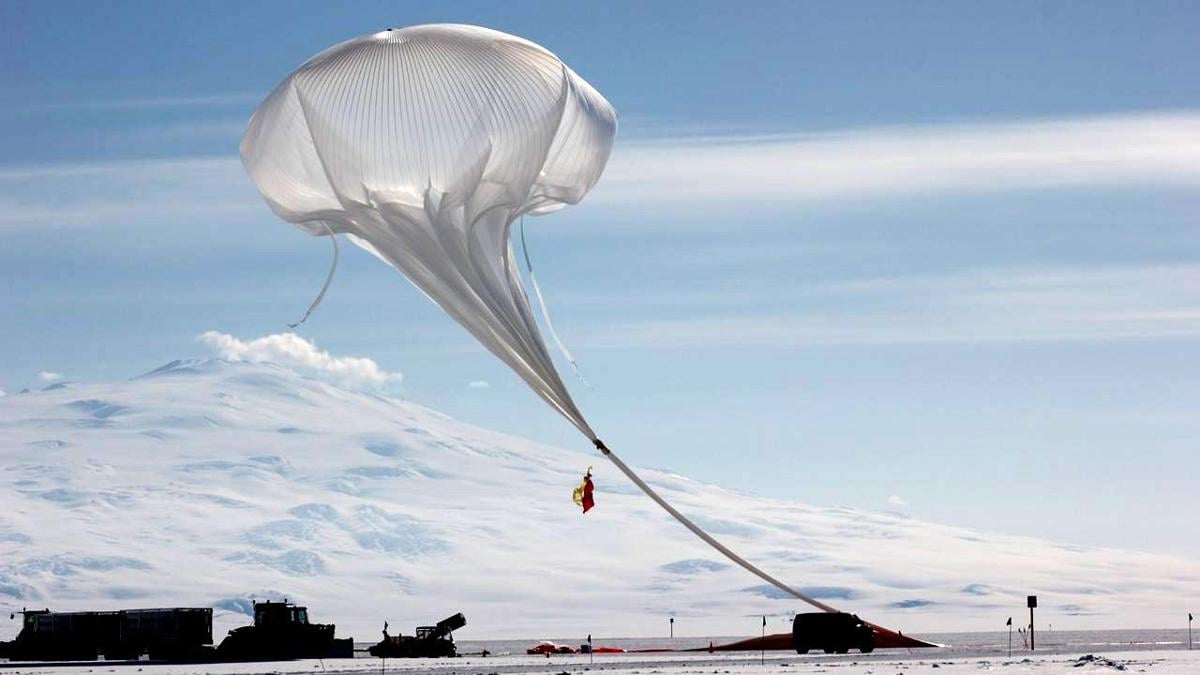A team led by University of Arizona astronomer Christopher Walker has been selected by NASA to launch a balloon-borne observatory to study the interstellar gas in the Milky Way and a smaller satellite galaxy.
The $40 million mission is scheduled to launch in December 2021 from NASA’s balloon facility in Antarctica.
It will use NASA’s latest Ultra-Long-Duration Balloon technology, allowing the observatory to stay aloft for 100 to 170 days.
That will be enough time to map a large swath of the Milky Way galaxy and all of the smaller satellite galaxy known as the Large Magellanic Cloud, said Walker, an astronomer at the Steward Observatory.
The Milky Way, our home galaxy, is a more evolved “present-day galaxy,” while the Large Magellanic Cloud “has characteristics of a galaxy in the early universe,” he said.
Using those two “bookends,” Walker said astronomers can understand “the life cycle of the interstellar medium and how the gas and dust between the stars assembled into stars and planets and all the stuff that goes with it.”
Walker said he tells his students at the UA that the study of such seemingly esoteric phenomena is really very personal — “4.7 billion years ago, every atom in your body was floating in the interstellar medium.”
Walker, who first proposed the mission as an orbital one 14 years ago, said switching to a balloon launch allows him to gather the same scientific data in less time for 5 percent of the cost of a rocket-launched satellite.
“From a balloon, you can have a much more powerful instrument,” Walker said. “It also uses state-of-the art technology.”
The observatory will include a 1-meter mirror and an array of instruments to detect emission lines from carbon, oxygen and nitrogen.
That’s difficult to impossible to do with ground-based telescopes, Walker said, but the balloon will take the telescope above 95 percent of the Earth’s atmosphere. That’s critical for terahertz astronomy, which explores the millimeter and submillimeter wavelengths of light between infrared and microwaves.
The mission is known as GUSTO, which stands for Galactic/Extragalactic ULDB Spectroscopic Terahertz Observatory.
“GUSTO will provide the first complete study of all phases of the stellar life cycle, from the formation of molecular clouds, through star birth and evolution, to the formation of gas clouds and the re-initiation of the cycle,” Paul Hertz, astrophysics division director in the Science Mission Directorate in Washington, D.C., said Friday in a NASA news release.
Walker and co-investigator Craig Kulesa, another Steward astronomer, lead an international team that has already launched two Stratospheric Terahertz Observatories — “pathfinder” missions that proved the scientific merit of GUSTO, said Walker.
Those missions featured a “Frankenstein’s monster” observatory, cobbled together from parts originally slated for other missions, Walker said.
GUSTO will be built with new parts, with the telescope, mirror and instruments developed at the UA.
Mission operations and the gondola for the instruments will be supplied by the Johns Hopkins University Applied Physics Laboratory.
NASA’s Jet Propulsion Laboratory, MIT, Arizona State University and the Netherlands Institute for Space Research will contribute detector technology.
The team includes Christopher Groppi, an associate professor at ASU’s School of Earth and Space Exploration, who, like Kulesa, is one of Walker’s former graduate students.





